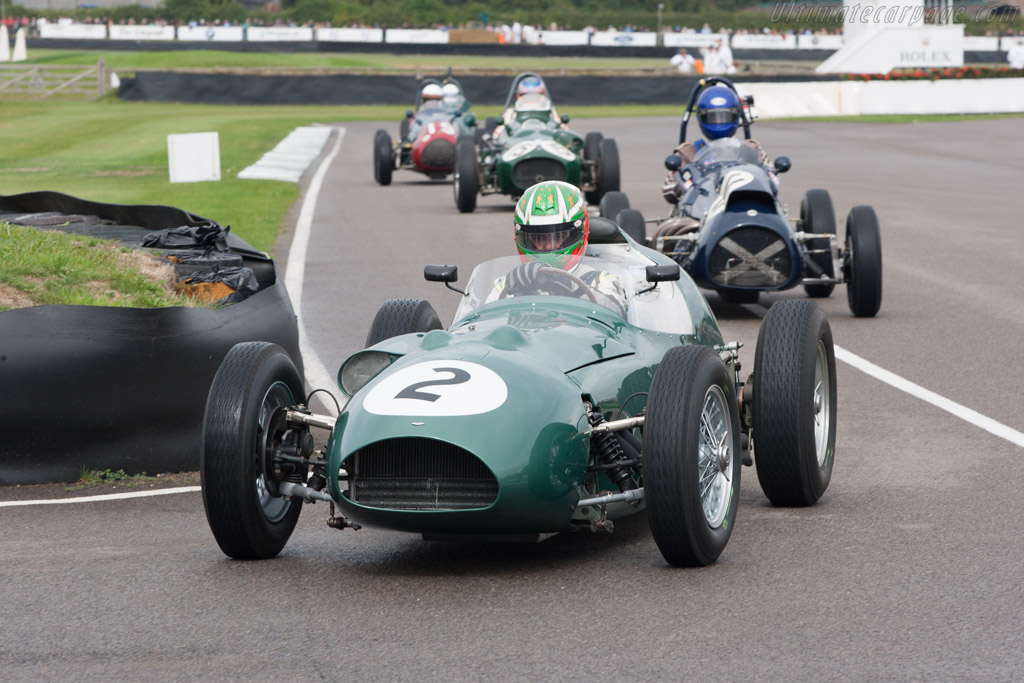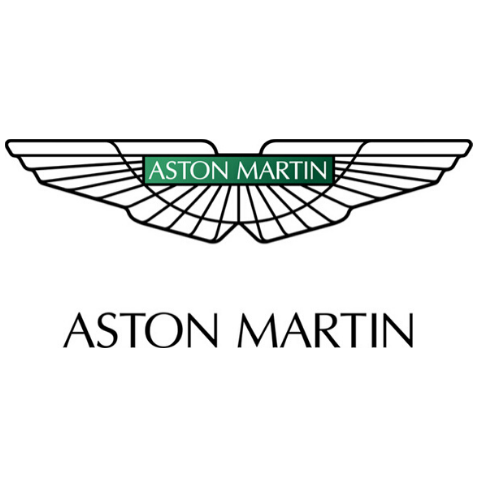1959 Aston Martin DBR4

The descriptions of the Classic Cars in the Directory were partly generated or supplemented with the help of artificial intelligence (AI). The content may occasionally not always be entirely accurate or factually correct despite careful checking.
The Aston Martin DBR4 1959 was built to compete in the Formula One championship series. It was designed to be a successor to the DBR1 sports car, which was successful in sports car racing. It was developed by Ted Cutting, who had previously worked for BRM and Lotus.
The car was equipped with a 2.5-litre straight-six engine, which was developed by Tadek Marek. It had an aluminium-alloy block and head, with twin overhead camshafts and inclined valves. The engine was capable of producing 250 horsepower at 7500 rpm, which was impressive for its time. The car had a top speed of 160 mph.
The engine was mounted in a tubular space-frame chassis, which was made of chrome-molybdenum steel. This provided a strong and lightweight structure to support the car. The suspension was independent at the front, with double wishbones and coil springs. At the rear, there was a De Dion axle, with transverse leaf springs and telescopic dampers.
The car was fitted with Girling disc brakes, which were revolutionary at the time. They provided much better braking performance than the older drum brakes. The wheels were magnesium-alloy, with a central locking mechanism. The tyres were supplied by Dunlop, and were 5.00 x 15 at the front and 6.00 x 15 at the rear.
The bodywork was designed by Ted Cutting, and was made of aluminium. It was aerodynamically efficient, with a low and sleek profile. It had a distinctive nose, with a large air intake to feed the engine. There were two small air intakes on either side of the nose, to provide cooling air for the brakes.
The cockpit was cramped, with the driver sitting low and almost lying down. The steering wheel was small and close to the driver, with the gear lever mounted on the right-hand side of the car. The dashboard was spartan, with only a few gauges to monitor the engine and the car's speed.
In 1959, the car was driven by Roy Salvadori and Carroll Shelby in the Formula One championship series. However, the car was not competitive, and was overshadowed by the dominant Ferraris and Coopers. The team withdrew from the championship after only one race.
Overall, the Aston Martin DBR4 1959 was an impressive technical achievement, with a powerful engine, advanced suspension, and aerodynamically efficient bodywork. However, it was not successful in competition, and remains a footnote in the history of Formula One.
Milestones
- The Aston Martin DBR4 was introduced in 1959 as a replacement for the DBR1. - The DBR4 was designed by Ted Cutting, and featured a lightweight tubular spaceframe chassis with a 3.7-liter inline six-cylinder engine. - The car made its debut at the Dutch Grand Prix in May 1959, with Roy Salvadori and Carroll Shelby behind the wheel. - Despite impressive performance, including a podium finish at the British Grand Prix, the DBR4 struggled to compete with the dominant Ferrari and Cooper teams. - Only four DBR4s were built, with the last example being completed in 1960. - The DBR4 was succeeded by the more successful DBR5 in 1960.Technical
- Manufacturer: Aston Martin - Model: DBR4 - Production years: 1959-1960 - Body style: Open-wheel race car - Chassis: Steel tubular space frame - Suspension: Double wishbone front, de Dion rear - Engine: 2.5 L (2,493 cc) inline 4-cylinder, DOHC, naturally aspirated - Power output: 280 bhp (209 kW) at 6,500 rpm - Transmission: Five-speed manual - Brakes: Disc brakes at all four corners - Wheels and tires: Dunlop racing tires - Weight: 570 kg (1,256 lb) - Top speed: 160 mph (257 km/h) - Racing history: Competed in Formula One and other international races, with notable drivers including Roy Salvadori and Carroll Shelby. Best result was a third-place finish at the 1959 British Grand Prix.